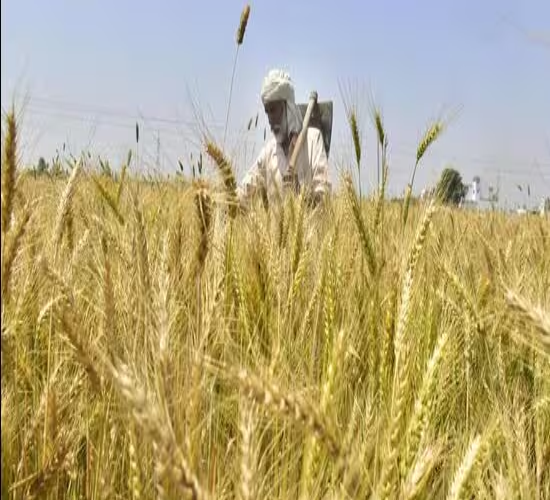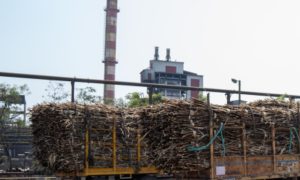Wheat stocks at 7-year low, Centre pins hopes on bumper harvest

A bumper harvest of wheat, as is being expected this year, will be critical to replenish government-held inventories, which have plunged to a seven-year low after record open-market sales by the government to boost domestic supplies and curb prices amid lower output for two straight years, according to experts and officials aware of the matter.
The dip in stocks, the lowest since 2017, follows the government’s sale of nearly 10 million tonne since June last year to bulk buyers, such as flour mills, to curb domestic prices.
Wheat inflation in the world’s second-largest grower, which climbed to record highs in the aftermath of the Ukraine war, has moderated to about 5% on an annual basis due to aggressive supply-side measures undertaken by the government.
Despite lower output due to extreme weather over two straight cropping seasons, the government has avoided wheat imports, which attract a 40% duty.
The Food Corporation of India (FCI), the Centre’s main grain-handling agency, had about 9.4 million tonne of the grain at the start of the current month compared to nearly 11.5 million tonne in March last year, according to an official data. Current stocks are not much higher than a buffer or emergency reserve of about 7.6 million tonne the government must maintain as on April 1, according to an official data.
If inventories go below the buffer requirement, it will be for the first time since 2016 that wheat the buffer norm will be breached. To ensure robust wheat procurement, the Union government has issued instructions to states to start procurement of wheat at minimum support prices (MSP) from March 1, earlier than usual, and transfer payments to farmers’ accounts with 48 hours, a senior official said.
The output of wheat this year is set to be a record 112 million tonne during 2023-24, compared to the previous year’s 110 million tonne, according to the government’s projections. Wheat is sown in November and harvested during March-April.
Earlier this month, the food ministry said that it intended to procure 30-32 million tonne for publicly held stocks. “The total requirement for food security purposes and all welfare programmes is about 23 million tonne,” an official said. Procurement refers to the government’s purchases of food grains from farmers at minimum support prices.
The government missed its procurement targets for the last two years. In the 2023-24 crop year, FCI was able to purchase 26.2 million tonne against a target of 34.15 million tonne. In the 2022-23 season, the government’s purchases of wheat had dropped to 18.8 million tonne against a targeted 44.4 metric tonne.
In the last two years, farmers preferred to sell to private traders because prices continued to be above minimum support prices despite a ban on wheat export.
The government has been battling high food inflation for much of the current fiscal, prompting it to ban the export of rice, wheat and onion to boost local supplies. The Union government has ramped up output of basic staples under its subsidized Bharat brand to reach consumers directly in an attempt to control prices, especially of cereals, ahead of the parliamentary elections.
Early sowing in many regions and cool conducive weather have prompted the government to estimate a bumper harvest of the grain at 112 million tonne in 2024-25. According to food secretary Sanjeev Chopra, the government doesn’t foresee any disruptions to the procurement process due to the farmers’ uprising that has gripped the foodbowl state of Punjab.
To meet its targets, the government hopes to procure more wheat this year from Uttar Pradesh, Rajasthan and Bihar, states where procurement has traditionally lagged.
The government has targeted to procure 6 million tonne from Uttar Pradesh alone, where the number of procurement centres have been increased.
“The condition of wheat is excellent and there are no forecasts of heatwaves. About 80% of the grain sown this time are heat-tolerant varieties,” an agriculture ministry official said.
In some regions, wheat arrives at markets earlier but procurement starts from April 1. “This leads us to miss some procurement in the initial 15-20 days of arrival in the market. Now we have given freedom to states to fix the procurement dates,” Union food secretary Sanjeev Chopra said.
In the previous rabi season, the governments of Uttar Pradesh and Bihar procured 214,981 tonnes and 589 tonnes of wheat as against a target of 3.5 million tonnes and 1mt, respectively, while Rajasthan procured 438,000 tonnes.
“This year, India has been lucky to escape an early summer and heatwave conditions, which had roiled cereal output in the past two years,” said Abhishek Agrawal of Comtrade, a commodities trading firm.
Source Link : https://www.hindustantimes.com/india-news/wheat-stocks-at-7-year-low-centre-pins-hopes-on-bumper-harvest-101711480273075.html














